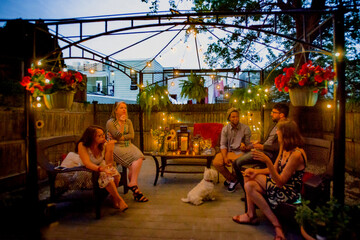Pergolas are named for the Latin word “pergola,” which means “projecting eave.” a Pergola is an outdoor structure that can provide shade for a passageway, walkway, or sitting area. Pergolas are typically pillars or vertical posts supported by sturdy open lattices. Woody vines can be trained to grow on the Pergola to provide shade and beauty.

If you’re an experienced do-it-yourselfer, you can purchase a kit or order plans for a custom pergola. Make sure you purchase one that suits the conditions of your backyard and climate. You should also check for plumbing and gas lines before you start. Always hire a professional Pergola builder with proven experience and a good reputation. Make sure you have seen some examples of their previous work and ask for references.
Pergolas are also an excellent place to grow plants. Some common types include Dutchman’s Pipevine, which attracts butterflies, and Virginia Creeper, which has young red leaves. Morning Glory is another popular flowering vine. You can even add soft sheer fabric to the Pergola to add a touch of elegance to the area. You can also hang baskets and strings of decorative outdoor lights to add warmth and color. Listed below are some tips to make the most of your Pergola.
Consider adding a Pergola to your backyard. Pergolas naturally become the focal point of a backyard. You provide visual interest to guests on how the area can be used. When planning your outdoor space, choose a pergola that will provide shade. It will be more comfortable to hang out in this space if you know what you want to do with it. Pergolas also create a sense of privacy, blocking out neighboring properties. A good pergola will also muffle neighborhood noise.
Choose a plank of wood for your Pergola. Wood is an excellent choice; you can stain it to match your home’s exterior. If you live in an area where it rains regularly, you can opt for a vinyl pergola. These materials are durable and low maintenance. But keep in mind that they cost more than aluminum and vinyl. In any case, they’re worth the extra cost. So, think carefully before you make your purchase.
The materials you choose for your Pergola will make the structure more durable and weatherproof. Choose a wood or metal material for the support posts. Narrow slats can give your Pergola a refined look. While robust, wooden supports will give it a rustic look. Consider using retractable canopies or shade cloths for additional overhead protection. Moreover, consider how you can use your Pergola. Besides providing shade, a Pergola can also serve as a structure for overhead string lights.
The term Pergola has historical origins. The Latin word “pergola” refers to a pergola’s projecting eave. The structure is often used to support climbing plants or to provide a shaded area. Pergolas are common outdoor features in single-family homes and public parks. The history of Pergolas is rich and fascinating. While many people associate it with French wine country and Italian gardens, it is widely used today as an outdoor feature for single-family homes.
The primary purpose of a Pergola is shade and seclusion, but it can also be used to create a welcoming entrance to a garden. While arbors are mostly freestanding structures, pergolas may extend beyond the perimeter of a home’s exterior wall. A pergola can also be used to create a private area by incorporating vines. However, if you’re a beginner, a pergola might not be for you.
A Pergola is a type of outdoor structure that provides shade, typically made of beams and columns. It can be freestanding, attached to a house, or attached to a fence. It can also be attached to a gate. A Pergola is a great way to add character to your home and garden. You’ll be able to use it as a seat, shade, or dining area. Once you have one installed, you’ll be delighted with its beauty.